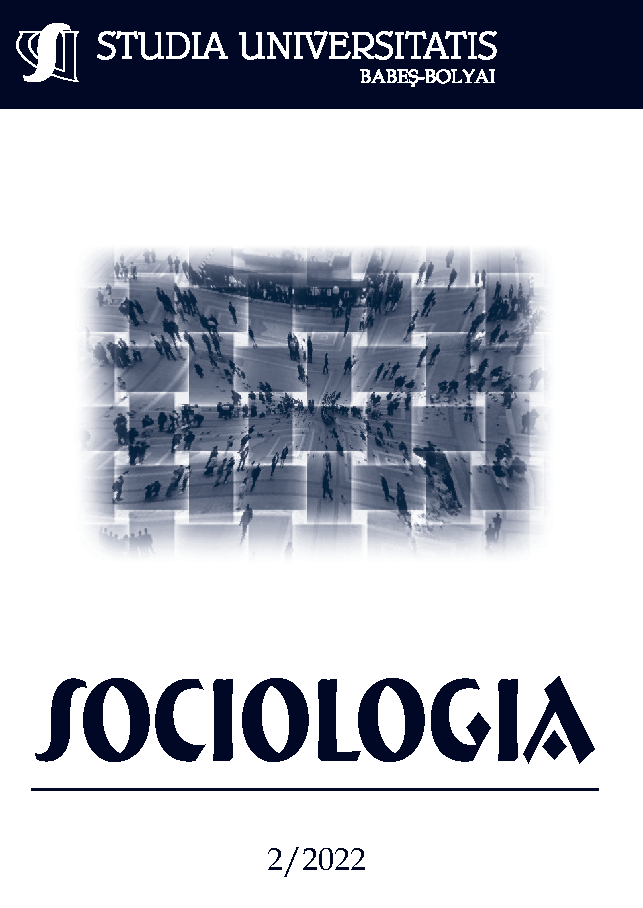BALANCING EFFICIENCY AND PERSONAL TIME REQUIREMENTS FOR HUMAN RESOURCES PROFESSIONALS AFTER TELECOMMUTING
DOI:
https://doi.org/10.2478/subbs-2022-0007Keywords:
human resources, telecommuting, “flexibility stigma”, work-life balance, productivityAbstract
The exploitation of work and household responsibilities among women and men remains a pressing issue with significant impacts on employee productivity and satisfaction. This study sheds light on the patterns of exploitation and their consequences, with a specific focus on the experiences of HR professionals. The research emphasizes the prevalence of the flexibility stigma in society, which views flexible work arrangements, including teleworking, as less committed, motivated, and productive compared to traditional 9-5 work hours. The study also highlights the tendency for workers to extend their work hours when boundaries between work and personal life become blurred. In particular, the study highlights the increased likelihood of working overtime as a result of teleworking, which can further contribute to the exploitation of work and household responsibilities. For HR professionals, it is essential to understand these challenges and develop strategies that support employees’ work-life balance and well-being. The study concludes by calling for a comprehensive approach that considers the institutional and cultural contexts in which employees operate and that prioritizes their well-being and productivity.
References
Bratton, J., & Gold, J. (2012). Human resource management: Theory and practice. New York, NY: Palgrave Macmillan.
Chung, H. (2022). The Flexibility Paradox (1st ed.). Policy Press.
Chung, H. and van der Horst, M. (2020) Flexible working and unpaid overtime in the UK: The role of gender, parental and occupational status. Social Indicators Research 151(2): 495–520.
Chung, H., Birkett, H., Forbes, S. and Seo, H. (2020a) Working from home and the division of housework and childcare among dual earner couples during the pandemic in the UK.
Chung, H., Birkett, H., Forbes, S. and Seo, H. (2021) COVID-19, flexible working, and implications for gender equality in the United Kingdom. Gender & Society 35(2): 218–32.
Eurofound (2020). Living, working and COVID-19 dataset. Dublin: Eurofund, accessed 20 December 2021, http://eurofound.link/covid19data.
Hammonds, K. (2005). Why we hate HR. Fast Company, pp. 40–42.
Hoyler, M., & Harrison, J. (2017). Global cities research and urban theory making. Environment and Planning A: Economy and Space, 49(12), 2853–2858.
Kelliher, C., & Anderson, D. (2010). Doing more with less? Flexible working practices and the intensification of work. Human Relations, 63(1), 83–106.
Kelly, E. L., Moen, P., & Tranby, E. (2011). Changing Workplaces to Reduce Work-Family Conflict: Schedule Control in a White-Collar Organization. American sociological review, 76(2), 265–290.
Khochan, T. (2004). Restoring trust in the human resource management profession. Asia Pacific Journal of Human Resources, 42, 132–146.
Legge, K. (2005). Human resource management: Rhetorics and realities (Anniversary ed.). Basingstoke, UK: Palgrave Macmillan.
Losey, M. R. (1999). Mastering the competencies of HR management. Human Resource Management, 38, 99–102.
Marx, K., & Engels, F. (1967). Capital: A critique of political economy. New York: International Publishers.
Ministerul Muncii și Solidarității Sociale (2021). C.O.R [online], https://mmuncii.ro/j33/index.php/ro/2014-domenii/munca/c-o-r, accessed 25 March 2022.
Olson, M. H. (1983). Remote office work: changing work patterns in space and time. Communications of the ACM, 26(3), 182–187.
Olson, M. H. (1989). Work at home for computer professionals: current attitudes and future prospects. ACM Transactions on Information Systems, 7(4), 317–338.
Pannenberg, M. (2005). Long-term effects of unpaid overtime: Evidence for West Germany. Scottish Journal of Political Economy, 52(2), 177–193.
Putnam, L. L., Myers, K. K., & Gailliard, B. M. (2014). Examining the tensions in workplace flexibility and exploring options for new directions. Human Relations, 67(4), 413–440.
Reuschke, D., & Ekinsmyth, C. (2021). New spatialities of work in the city. Urban Studies, 58(11), 2177–2187.
Ulrich, D., & Brockbank, W. (2005). The HR value proposition. Boston, MA: Harvard Business School Press.
Watson, T. (2017). Sociology, Work and Organisation: Seventh Edition (7th ed.). Routledge.
Williams, J., Blair-Loy, M., & Berdahl, J. L. (2013). Cultural schemas, social class, and the flexibility stigma. Journal of Social Issues, 69(2), 209–234.
Downloads
Published
How to Cite
Issue
Section
License
Copyright (c) 2022 Studia Universitatis Babeș-Bolyai Sociologia

This work is licensed under a Creative Commons Attribution-NonCommercial-NoDerivatives 4.0 International License.



